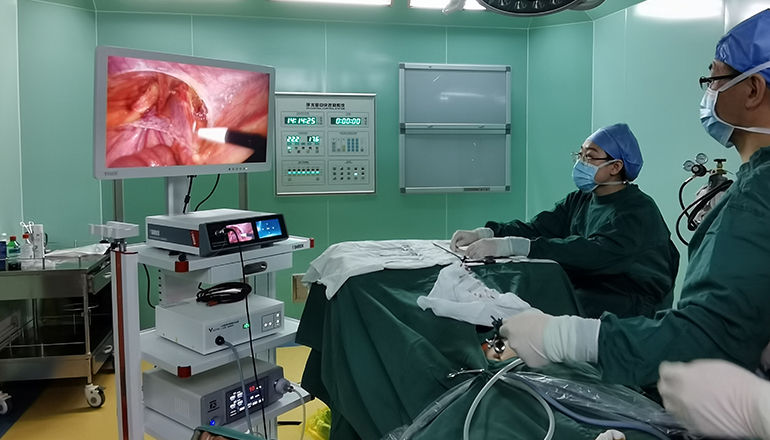- Shanghai, China
- [email protected]
- +86-21-58189111
Laparoscopic hernia repair is a minimally invasive surgical procedure used to treat hernias in the abdominal wall. A hernia occurs when an organ or tissue protrudes through a weakened area or hole in the surrounding muscle or connective tissue. Hernias can cause discomfort, pain, and swelling, and can lead to serious complications if left untreated.
During a laparoscopic hernia repair, the surgeon makes several small incisions in the abdomen and inserts specialized instruments and a camera called a laparoscope. The laparoscope allows the surgeon to see inside the abdomen and guide the instruments to the hernia site. The hernia is then repaired using a mesh patch, which is secured in place with sutures or surgical staples.
The laparoscopic approach offers many advantages over traditional open surgery. Because the incisions are small, patients typically experience less pain, scarring, and blood loss than with open surgery. They also tend to have shorter hospital stays and faster recovery times. Additionally, laparoscopic hernia repair may be associated with lower rates of complications, such as wound infections, hernia recurrence, and blood clots.
After the procedure, patients will need to stay in the hospital for a short period of time for observation and monitoring. They may experience some discomfort and pain around the incision sites and the hernia repair site, but this can typically be managed with pain medication. Patients will also need to follow a special diet and activity restrictions for several weeks following the surgery to allow the incisions and the hernia repair to heal properly.
In some cases, patients may require further treatment after a laparoscopic hernia repair. For example, if the hernia was caused by an underlying medical condition, such as obesity or chronic constipation, patients may need to make lifestyle changes or undergo further treatment to prevent the hernia from recurring.

As with any surgical procedure, laparoscopic hernia repair does carry some risks. These may include bleeding, infection, damage to surrounding organs or tissues, and complications associated with anesthesia. Patients should discuss the potential risks and benefits of the procedure with their healthcare provider prior to undergoing surgery.
Laparoscopic hernia repair is a safe and effective treatment option for patients with hernias in the abdominal wall. This minimally invasive procedure offers many benefits over traditional open surgery, including faster recovery times, lower rates of complications, and smaller incisions. If you or someone you know is considering a laparoscopic hernia repair, speak with a healthcare professional to learn more about the potential risks and benefits and to determine whether it is an appropriate treatment option.
In summary, laparoscopic hernia repair is a minimally invasive surgical procedure used to treat hernias in the abdominal wall. The procedure offers many advantages over traditional open surgery, including faster recovery times, lower rates of complications, and smaller incisions. Patients should discuss the potential risks and benefits of the procedure with their healthcare provider prior to undergoing surgery and follow their post-operative care instructions carefully to ensure proper healing. With proper treatment and care, patients can experience relief from the discomfort and complications associated with hernias and return to their normal daily activities.
Leave a Comments